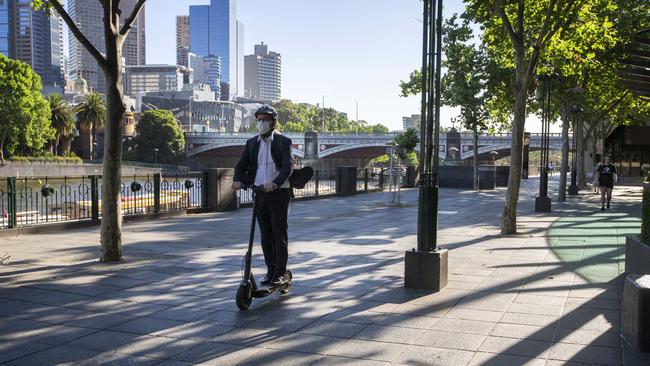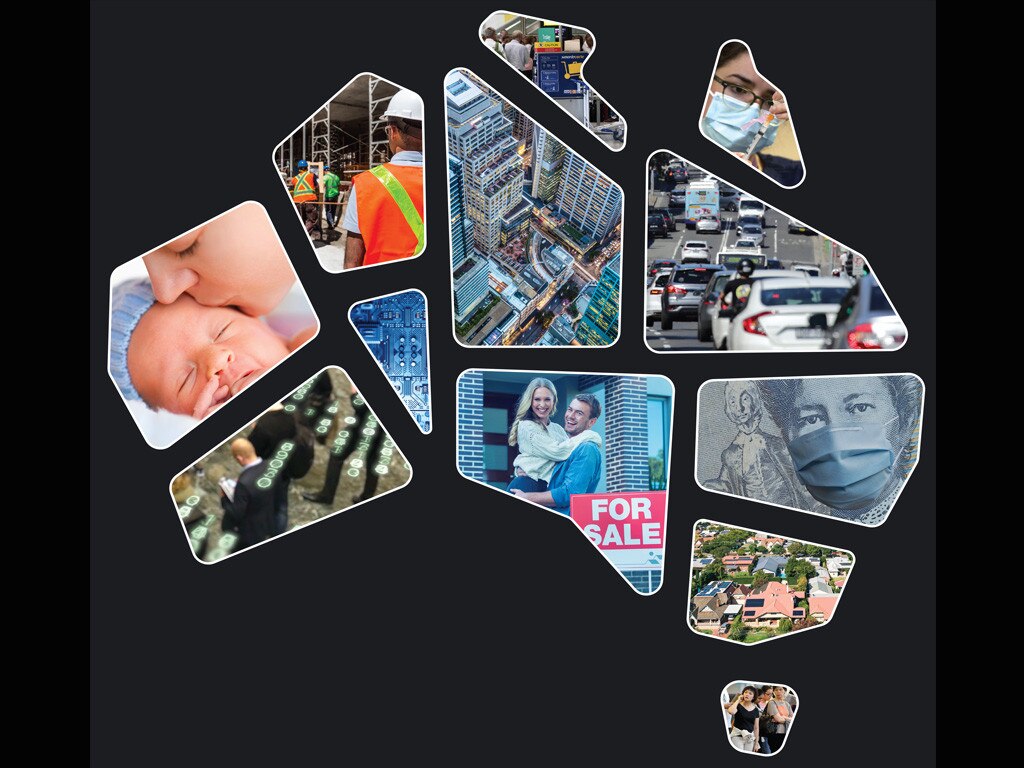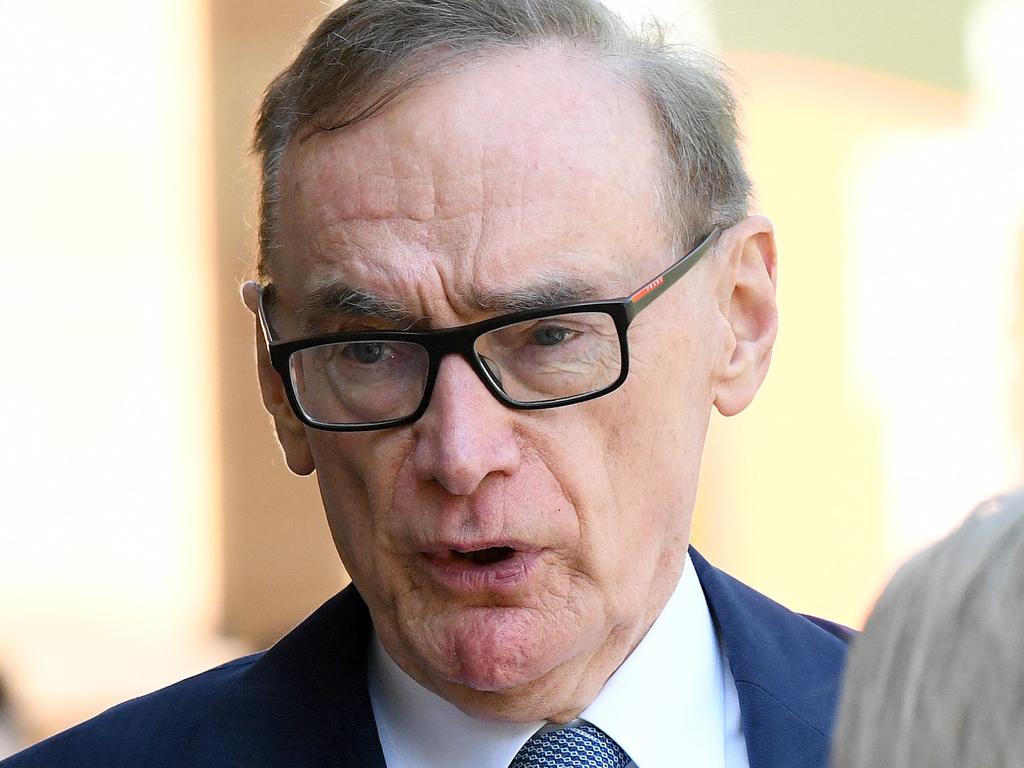Shrinking population, economic hot water

But it’s worth the effort to give it a go because the change in population growth and its distribution across the regions is the long economic shadow of the pandemic, and it will be played out in the next four to five years or longer. And it is irreversible.
With international travel halted and net overseas migration nationally predicted to hit reverse next year and in 2022, the suburbs hardest hit by population declines include not only established Asian migrant communities but also those university dormitory suburbs dominated by surges in what Peter Costello recently called “soft visa” sales for foreign students.
We’re looking here at the Melbourne central business district, officially known by the Australian Bureau of Statistics as Melbourne Statistical Area 2, which last year received a net overseas migration boost of 3500 people. Internal migration — locals moving out — last year numbered about 1000 and the natural population increase was a modest 232. That’s a lot of students and potential part-time delivery drivers out of a population of a touch above 54,000 this year.
Given this strong gain in overseas migration to last year, the pre-COVID population predictions for the CBD produced by the federal Department of Health, which we used as a benchmark, had the area increasing its population to 60,500 in 2024, an annual growth figure of about 3 per cent between this year and 2024.
Then along came COVID, and the Victorian government’s quarantine breakout, which didn’t do a lot to promote migration to Melbourne of any sort.
Given these assumptions, which are conservative, the Melbourne CBD will not begin a slow recovery until 2023 and 2024, leaving annual population growth to 2024 approaching minus 1 per cent.
The federal government’s demographic advisers at the Centre for Population also are assuming a temporary drop in fertility rates for a few years as parents normally defer having children during a downturn, but we’re holding back judgment on that. There are only so many re-runs of Death in Paradise you can watch during lockdowns.
Victorian suburbs in a similar position to the CBD, with high positive overseas migration but relatively high negative internal migration, include Clayton, Carlton, North Melbourne, Box Hill and Dandenong.
In NSW, suburbs with disproportionate numbers of overseas migration residents to lose include Parramatta-Rosehill, Redfern-Chippendale, Burwood-Croydon, Canterbury South-Campsie, Arncliffe-Bardwell Valley and Ashfield.
This potential for zero population growth, or even negative population growth, will be focused on the two biggest states, which have been the main beneficiaries of overseas migration. There are a few suburbs in Queensland heavily affected, such as Surfers Paradise and Spring Hill, but that’s about it for the rest of Australia.
The regions less affected by a loss of overseas migration tend to be found in rural Australia, particularly in Tasmania, while in more remote or Indigenous regions of central Australia the locals must be wondering what all the fuss is about. Generally speaking, rural Australians typically didn’t catch COVID-19, they mostly didn’t lose their jobs and there’s not going to be much impact on the way they live in the immediate future unless it’s from wealthy inner-suburban Melburnians and Sydneysiders wanting to buy their homes for double the asking price and to install a decent broadband service.
While the forecasts from the Centre for Population talk about our national annual growth rate dropping from 1.5 per cent in 2018-19 to 0.2 per cent in 2020-21 — the lowest growth rate since 1916-17 — there are plenty of metropolitan centres that will continue strong population growth, albeit at more realistic and sustainable levels.
We’re looking here at suburbs such as Riverstone-Marsden Park, Cobbitty-Leppington, Douglas Park-Appin and Austral-Greendale in NSW; Tarneit, Mickleham-Yuroke, Wollert, Mernda, Craigieburn West, Cranbourne East and Truganina in Victoria; and Ripley, Pimpama, Eagle Farm-Pinkenba, Coomera and Morayfield in Queensland.
Given our historical reliance on immigration, the irreversible impact of losing up to one million residents by 2024 will make short-term job losses from lockdowns look pretty minor. Eventually the billions of dollars of stimulus spending will be gone on home renovations or plastic surgery, rescue greyhounds or retail therapy. Then comes the economic hangover and voters start to get tetchy.
Presuming these assumptions on a population slowdown are correct, you could usefully ask: Will your kids be able to afford to buy a home and, if so, where? Do you already have an investment unit and, if so, is it near the local university? Will the state government go ahead building a new school or hospital in your area? Will your business get enough customers to survive if it’s in a high overseas migration suburb?
Even if you’re a public servant with what you think is a secure job as a teacher or a nurse, what happens if there are no more schools or hospitals getting built in your area? If you’re a tradie, what do you do if you learn there’s no housing construction required within commuting distance of your home?
It also should be a wake-up call for lots of businesses and trade unions, universities and politicians, all coasting comfortably along on economic multipliers driven by population gains.
Population growth has become the equal-second-prize-for-effort policy option that politicians have fallen back on in recent years, auctioning off our sovereignty today and our security tomorrow, because they lacked leadership skills or the ticker to build a consensus position with the punters on productivity and job participation rate changes, especially for women in terms of childcare and number of days worked.
My best guess is Scott Morrison and Anthony Albanese and the premiers have about a year to build an enduring and apolitical national consensus on population, productivity and participation rates before they’re all overtaken by political events, vested interests and bottom-feeding social media whackos, as we’ve seen in Britain and the US. Now that is a scary thought.
John Black has pioneered demographic profiling in Australia since the 1970s and is a former Labor senator for Queensland. He is executive chairman of profiling company Australian Development Strategies and some of the material referred to above can be found at www.elaborate.net.au/
Look up how population will change in your area on this interactive map





Australia’s population shifts because of changes in immigration, internal migration and the natural increase of births over deaths have been affected by COVID-19 in ways not yet fully measured, much less understood.